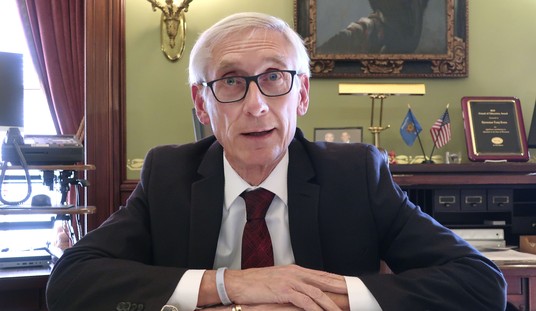Italians are looking forward to the end of this campaign. They are impatient to decide who will govern their country for the next five years — even though they can’t stand their privileged, unaccountable, inconclusive, and onerous politicians. These politicians are also referred to as “The Caste,” and they represent the same old faces of the past.
The electorate is exhausted and bored. It has been a flabby campaign without any debate over proposals. No TV spots and no face-to-face debates, which were banned by the absurd “Par Condicio” Act. Italians are numbed by a dangerous cocktail of resignation and generic fear of the future. They can’t derive hope from an effectual government. This means that many Italians will probably desert the polls on April 13-14 — perhaps many more than did so in the 2006 election.
The challenge for Chigi Palace, the House of Italian government, is between Silvio Berlusconi and Walter Veltroni. If Mr. Berlusconi wins, he will be Prime Minister for the third time. Berlusconi is a 71-year-old media tycoon who burst onto the political scene in 1994. He lost the 2006 election by a handful of votes (24,000) and predicted Romano Prodi would not last long. He didn’t. His government fell in January.
Mr. Veltroni is younger than his opponent. He is 53-years-old, but older as a politician than Berlusconi. He joined the Italian Youth Communist Federation at the age of 15 and was elected Rome city councilor in 1976. In 1987 Veltroni was elected to the Italian Chamber of Deputies. From 1996 to 1998 he served as vice-premier in the first Prodi’s cabinet. In 2001 Veltroni resigned as leader of the party after being elected mayor of Rome. He was confirmed for a second term in 2006.
One of the most important changes in this campaign is that there are no more old multi-party coalitions. The coalition of nine warring parties that supported Prodi’s cabinet is history. Veltroni has broken with the extremists and communists while now leading the Democratic Party — a new movement of the center-left reformists allied with a small party headed by ex-public prosecutor Antonio Di Pietro. Also, the old “House of Freedoms” center-right coalition doesn’t exist anymore. Mr. Berlusconi has broken up with his ally, Pierferdinando Casini, and formed the new People of Freedom party that embraces “Forza Italia” and the National Alliance, which is allied with the Northern League and a Sicilian regional party.
Despite the Berlusconi-Veltroni race, Italy remains a parliamentary republic with a party-list proportional representation system. On April 13-14 voters won’t elect the head of government directly; they will elect their representatives by voting only for a party. To become prime minister both Berlusconi and Veltroni need to gain the trust of the parliament. So their parties must win an overall majority in both the Chamber of Deputies and the Senate.
Opinion polls suggest that Mr. Berlusconi will likely win the election. The latest polls give People of Freedom and its two allies a lead of between six and nine percentage points over the Democratic Party. So Mr. Berlusconi will easily gain a majority in the lower house, in which the winner earns a nationwide “victor’s premium” of extra seats (55 percent). But the Senate is more complicated because premiums are allotted region by region. In five (out of 20) regions, the main parties are running neck-and-neck. In case of a deadlock, it’s likely to be a German style “Big Coalition” where both right and left come together in order to govern.
Other small parties runing, but have no real chance to win enough seats in Parliament to take part in government. To win seats in the Chamber of Deputies they need 4% of the vote nationwide, while for the Senate 8% of the vote in any one region is needed. Three small parties might do it: the Union of Christian and Center Democrats (UDC) led by Casini; the Rainbow Left, a Marxist-Green alliance headed up by Fausto Bertinotti; and The Right, with Daniela Santanchè in charge. Both Berlusconi and Veltroni have been urging voters to cast “useful” votes to avoid the prospect of “wasting” them among the minority parties with no chance to govern.
Italians feel more depressed, older, and poorer than a few years ago because their country is in a social and economic quagmire whose emblematic picture is the Naples’ rubbish crisis. This relative decline is due to political stalemate and to the endemic failure of economic liberalism. A bloated public sector, tax and spending in a vicious circle, hyper-regulation, vast public debt, and declining economic competitiveness are oppressing Italian citizens.
The growth is low (GDP will increase by 0.3-0.6% in 2008) and the quality of life is declining. Bureaucracy and confusing rules keep foreign investment away. The employment rate remains one of the lowest in the Organization for Economic Cooperation and Development (OECD). The pension system is unsustainable and the labor market is inflexible. A 25-year-old worker with a short-term contract pays a quarter of his wages to fund the retirement of 58-year-old workers. 70% of Italians between 20 and 30 still live at their parents’ home.
Performance of Italian students are the worst among western countries. The wages are among the lowest of OECD member nations. According to a Bank of Italy study, the household head’s wages are almost unchanged from 2000-2006. Prices, meanwhile, have risen. This collapse of disposable income undermined first the savings and then the consumption of Italian households.
Hyper-taxation did not decrease the public debt (now at 106% as a proportion of GDP), but high taxes did serve the purpose of increasing public spending which now stands at 50.1% of Italy’s GDP. This increase in government spending neither made public administration more efficient nor served to fund the welfare state. Italy is the world’s 64th freest economy according to the 2008 Index of Economic Freedom. It is ranked 29th out of 41 countries in the European region.
Italy is still waiting for a Thatcher, a Reagan, or at least a Blair. The problems, for the most part, are the same as they were in England and America and the solutions are well-known: lower and simplified tax rates, a strong diet for government, less onerous bureaucracy, effective civil jurisdiction, labor-market and public utilities liberalization, welfare and pension system reforms, education based on merit and competition, and research and development funds.
But both Mr. Berlusconi and Mr. Veltroni are unlikely to accomplish the needed reforms to revive Italy’s staggering economy.
In his last term as Prime Minister in 2001-2006, Mr. Berlusconi failed to fix Italy’s economy. He promised tax cuts and liberalization, but results were insufficient. His current campaign isn’t signaling enough commitment to economic reforms. Judging by his statements (for example, his opposition to the sale of the Italian flag carrier — the government run airline Alitalia — to Air France-KLM), Mr. Berlusconi seems to be a corporatist and protectionist averse to free-market competition. His likely finance minister, Giulio Tremonti, has talked about lobbying the European Union for tariff barriers on Asian imports.
Mr. Berlusconi was elected in 1994 and 2001 mentioning Mrs. Thatcher as his political model. But these days he thinks of himself as a new Amintore Fanfani, one of the most important leaders of the Christian Democratic Party in the fifties and the sixties. Fanfani’s political activity was, for the most part, directed to a welfare and corporate system that he believed to be more in line with the social doctrine of the Catholic Church than the free market or socialism.
Ex-communist Veltroni is depicting himself as a “new season,” — a sort of Italian Barack Obama — but his outlook sounds like a soft dirigism (capitalism with a strong government element). His main focus in this campaign has been not to lose the consensus he currently enjoys in the Rainbow Left party. But he seems not to have broken through and gotten much support from the non-partisan and middle of the road voters. He can’t escape the burden of Mr. Prodi’s outgoing center-left government — both its failure and its unpopularity. This is especially due to the tax increases it imposed.
Both main parties offer similar plans that seem to have been written to reassure voters. They promise benefits, assistance, housing projects, higher pensions, and minimum wages — in short, big new spending plans. But both Mr. Berlusconi and Mr. Veltroni remain vague about reforms. Italy is a country neither for Thatcher nor for Blair. It is a country for economic liberals, both on the right and on the left.
The two main party’s plans and leaders are the best proof of that.
Federico Punzi is a journalist and a blogger. He is co-author of “Speciale Commissioni,” a “Radio Radicale” program about Italian parliamentary committees’ activity. He writes about Italian and international politics for newspapers and web magazines.









Join the conversation as a VIP Member